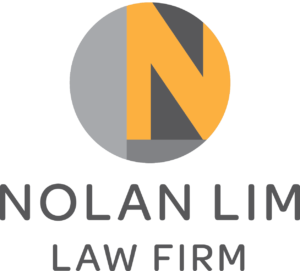Every situation is different and you should immediately consult an attorney if you believe that you are experiencing harassment in the workplace.
This Blog post takes a quick look at what might constitute as a Hostile Work Environment.
What is a Hostile Work Environment?
To qualify as a “hostile” workplace, conduct at the workplace must be intentional, severe, recurring and/or pervasive and interfere with the employee’s ability to perform his/her job.
Conduct and speech typically considered “hostile” is intimidating, offensive, abusive and/or otherwise offensive, going beyond rudeness or casual joking. Federal and state anti-discrimination laws prohibit harassing or discriminatory conduct when it is based on a legally protected characteristic such as sex, race, age, etc.
5 Examples from REAL CASES:
- Race: Plaintiff must prove harassment was unwelcome; because of race; affected the terms or conditions of employment; and conduct is imputable to the employer.
– Case Law Example (1): Co-workers referred to Plaintiff’s hair as “brillo head.” This *could be considered highly offensive if pervasive thereby altering the conditions of plaintiff’s employment. Washington v. Boeing Co., 105 Wn. App. 1, 19 P.3d 1041 (2000).
- Sexual/Gender Harassment: Regarding sexual harassment, courts have found for plaintiff in situations of an abuse of power and pernicious gender discrimination among others.
– Case Law Example (2): Hostile work environment harassment exists where co-workers or supervisors direct conduct or behavior toward employee because of her sex that creates an intimidating, hostile, or offensive working environment. Glasgow, 103 Wn.2d at 405; see also: DeWater v. State, 130 Wn.2d 128, 134-35, 921 P.2d 1059 (1996).
– Case Law Example (3): The harassment is imputed to the employer. Where an owner, manager, partner or corporate officer personally participates in the harassment, this element is met by such proof. To hold an employer responsible for the discriminatory work environment created by a plaintiff’s supervisor(s) or co-worker(s), the employee must show that the employer (a) authorized, knew, or should have known of the harassment and (b) failed to take reasonably prompt and adequate corrective action. This may be shown by proving (a) that complaints were made to the employer through higher managerial or supervisory personnel or by proving such a pervasiveness of sexual harassment at the work place as to create an inference of the employer’s knowledge or constructive knowledge of it and (b) that the employer’s remedial action was not of such nature as to have been reasonably calculated to end the harassment. Glasgow v. Georgia-Pac. Corp., 103 Wash. 2d 401, 407, 693 P.2d 708, 712 (1985).
- Sexual Orientation: Washington Supreme Court recognized a claim of unlawful harassment arising from anti-gay comments.
– Case Law Example (4): Supervisor asked the employee not to “flaunt” her sexual orientation around him. He told others he disliked her because she was gay… that he had tried to fire her. Loeffelholz v. University of Washington, 175 Wn.2d 264, 285 P.3d 854 (2012).
- Ethnic Discrimination: Ethnicity refers to an individual’s cultural heritage and includes one’s language, social customs, traditions, nationality, ancestry and sometimes his or her religion and related practices.
– Case Law Example (5): Defendant agreed to settle lawsuit alleging discrimination and harassment based on national origin. According to the lawsuit, an Asian Indian employee was subjected to ethnic taunts, such as being called “dot-head” and “Osama Bin Laden,” etc. he was physically attacked by a coworker. EEOC v. MBNA-America (2007).
Final Note:
In many United States jurisdictions, a hostile work environment is not an independent legal claim. For instance, an employee cannot file a lawsuit on the basis of a hostile work environment alone. Instead, an employee will have to prove that she or he has been treated in a hostile manner because of her or his protected class, such as gender, age, race, national origin, disability status, and similar protected traits.
Disclaimer:
The materials available in this blog post and on https://nolanlimlaw.com/ are for informational purposes only and not for the purpose of providing legal advice. You should contact an attorney to obtain advice with respect to any particular issue or problem.


